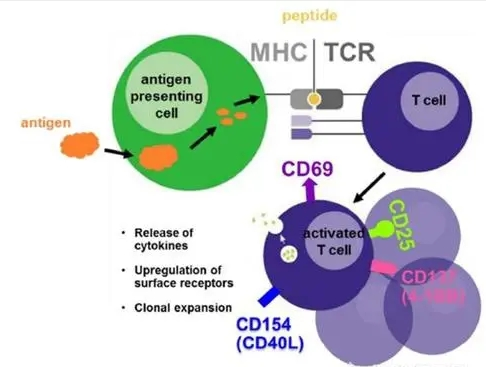Design and synthesis of antigen peptide
In order to obtain the best results from the antibodies produced, it is necessary to carefully design the antigen peptide to meet a basic condition: during the immune process, the antigen does not produce an excessive immune response, but at the same time produces antibodies that have the ability to bind to the protein of interest. Antigen design is a very complex subject with many details that need attention. Based on our experience, there are a few key basic design principles to consider:
Determine the purpose of the antibody
Starting a new research project, it is necessary to understand some basic properties of the protein of interest, especially if knowing the structure of the protein will be of great help in selecting regions that the antibody can easily reach and recognize. However, in the absence of such precise structural information, understanding the purpose of the study can influence strategies for peptide design. For example, if the study focuses on different regions of the protein, such as the C-terminal or N-terminal, or the protein in a specific state, such as phosphorylation, then the peptide designed according to the desired sequence and the corresponding antibody produced should not be too difficult to apply, however, the conformation of the protein will affect the interaction between the antibody and its recognition region. A possible problem in this case is that if in the folded protein the recognition region is hidden inside the protein, the antibody will not be able to reach the region and will not be able to interact.
Identify the selection principle of the area
Generally speaking, the most ideal antigen recognition region should be hydrophilic, located on the protein surface and easily deformed in structure. Because in most natural environments, hydrophilic regions tend to be concentrated on the protein surface, and hydrophobic regions are often enclosed within the protein, similarly, antibodies can only interact with the recognition regions found on the protein surface, and when these recognition regions have enough structural deformability to be transferred to the antibody's accessible location, there will be a high affinity with the antibody.

Continuous and discontinuous identification areas
A continuous region is a recognition region consisting of a continuous sequence of amino acids. Most antibodies target continuous recognition regions, and the high affinity with which antibodies bind to such regions indicates that this sequence is not inside the protein. A discontinuous recognition region represents a peptide sequence with a certain fold, or an antibody recognition region that connects two separate peptides. In some cases, antibodies against such discontinuous recognition regions can also be produced, but the antigen peptide used for immunization must have a secondary structure similar to the discontinuous recognition region, and the length of the sequence must meet the relevant requirements.
Basic suggestion
To avoid the risk that the recognition region is hidden inside the protein, we usually recommend selecting the N and C ends of the protein to produce the corresponding antibody. Because in a complete protein, the N and C ends are usually exposed to the surface of the protein. However, it must be noted that the C-terminal of the membrane protein is too hydrophobic to be suitable as an antigen.
Length of sequence
It is usually recommended that the sequence length of an antigen polypeptide be between 8 and 20 amino acid residues, if it is too short, there is a risk that the peptide is not specific enough and the resulting antibody is not strong enough to bind to the natural protein. However, if the sequence length exceeds 20, it will be possible to introduce secondary structure, the generated antibody may lose specificity, and the longer the peptide chain, the synthesis difficulty is usually increased, and it is not easy to obtain high-purity products.
Selection of carrier protein crosslinking
The vector protein is added to one end far from the antibody recognition region, and Cys is added to the N or C end in the absence of Cys in the sequence as the preferred method of cross-linking.
Omizzur Biotech custom peptide synthesis business includes: drug peptides, clinical peptides, stapled peptides, starch peptides, aldehydes peptides, cyclic peptides, disulfide bridging peptides, transmembrane peptides, various antimicrobial peptides, cosmetic peptides, phosphorylated peptides, PEG peptides, BSA and KLH coupling antigen peptides, custom synthesis of peptide antigen,peptide impurity synthesis,various acid modified peptides, various amine-modified peptides ), various fluorescent peptides. Labeled (FITC, FAM series, DOTA, TAMRA series, Cy series) isotope peptides, etc.
Copyright © 2020 Omizzur Inc | Terms & Conditions | Privacy Notice | Sitemap